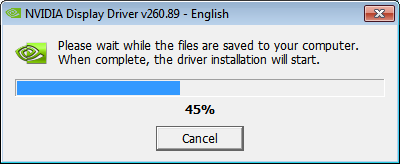Nvidia's GeForce GTX 480: Before And After A Year Of Driver Updates
One Year Of GeForce Drivers
Everyone is looking for more performance, which is the main reason why anyone bothers to update their graphics driver. We already analyzed AMD's driver-based performance gains in AMD's Radeon HD 5870: Before And After A Year Of Driver Updates. Over the course of a year, someone gaming on the Radeon HD 5870 can look forward to a roughly 5% bump in performance with a few rare exceptions. More important, grabbing each of AMD's Catalyst updates ensures proper compatibility with games like Lost Planet 2, F1 2010, and Metro 2033.
That's the case for AMD and its cards. But what about Nvidia?

The company has spent a great deal of time and money cultivating partnerships with game developers, often to the bemoaning of non-Nvidia owners who feel their gaming experience gets unfairly penalized. You have to wonder exactly what this means. Is this just a matter of getting more face time before a game launches? Or does this translate into early optimization in driver development? More precisely, if you own Nvidia hardware, you want to know if you are going to see more improvements than if you had bought a Radeon.
Let’s put this into perspective. If we look back to the last generation of GeForce cards as an example, the GeForce GTX 480 was released in late March 2010. It’s still a decent card, performing close to the more recently released GeForce GTX 570. But do you remember how long you waited for Nvidia’s first DX11 GPU? It was released seven months after AMD launched the Radeon HD 5870.
| Driver | Date |
|---|---|
| GeForce/Ion Driver 266.58 | 1/18/11 |
| GeForce/Ion Driver 260.99 | 10/25/10 |
| GeForce/Ion Driver 260.89 | 10/18/10 |
| GeForce/Ion Driver 258.96 | 7/29/10 |
| GeForce/Ion Driver 257.21 | 6/15/10 |
| GeForce Driver 197.75 | 5/10/10 |
| GeForce Driver 197.41 | 4/9/10 |
After waiting seven months and spending a too-expensive $500, you are probably holding off on your next upgrade. Until that time, you must rely on drivers to improve your performance beyond where it sits today. Unlike AMD, Nvidia doesn’t release drivers on a monthly basis. For example, since the GTX 480 was released, we have had seven drivers posted.
If you update drivers regularly, then you are probably familiar with the Nvidia's performance claims. You see them every time you download a new software package. We want to know exactly how much these updates really matter to real-world gaming. Have all of the company's downloads been worthwhile installations? We’re selecting four drivers spanning the GeForce GTX 480’s current life to find out.
Stay On the Cutting Edge: Get the Tom's Hardware Newsletter
Get Tom's Hardware's best news and in-depth reviews, straight to your inbox.
Current page: One Year Of GeForce Drivers
Next Page Performance Enhancements: Beta Drivers-
-Fran- Heh, now it cooks my steaks 5 secs faster.Reply
Oh wait... I'm using a GT425M on my notebook... Damn!
Cheers! -
dragonsqrrl Impressive results to say the least... well, except for WOW. That has to be a bit of a disappointment for the people who care about that title. But otherwise quite remarkable performance optimizations from the driver team.Reply
I have to agree with the conclusion, due to the recent nature of the Fermi architecture it probably took both Nvidia and developers time to get used to the new hardware. It just wasn't well optimized upon launch. Although I think it's worth noting that it still managed to perform well even on those early drivers. -
ezodagrom In the World of Warcraft page instead of saying "Percent Gain from 197.41 to 266.58" it says "Percent Gain from 9.10 to 11.1". ;PReply -
acku Reply9512364 said:In the World of Warcraft page instead of saying "Percent Gain from 197.41 to 266.58" it says "Percent Gain from 9.10 to 11.1". ;P
Oops! My motto: Pobody's Nerfect. :kaola:
Fixed! -
gofasterstripes TBH it looks like good work from the green team. Cool, my 470 is getting bumped for freeReply
On second thoughts, maybe 'cool' is the wrong word.....